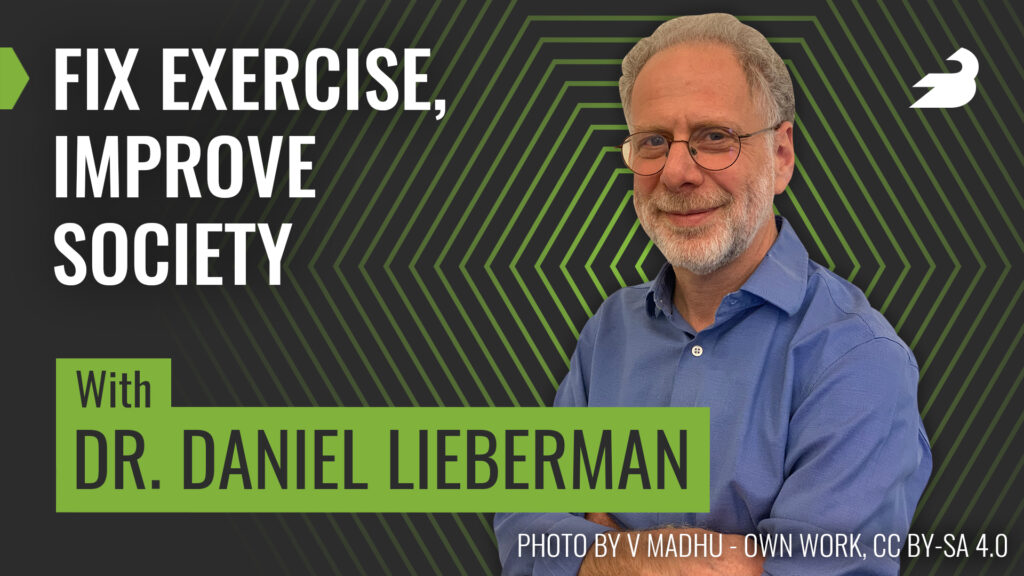Today we’re talking to Dr. Daniel Lieberman, Professor of Human Evolutionary Biology at Harvard University and Chair of Harvard’s Department of Human Evolutionary Biology. Dr. Lieberman is also the author of numerous books, most recently one titled “Exercised: Why Something We Never Evolved to Do Is Healthy and Rewarding.” Dr. Lieberman took time out of his busy teaching and research schedule to join us on the BarBend Podcast. We discuss why humans evolved for a very different lifestyle than we live today, and why exercise has become something many people dread while others embrace it in various forms. We also discuss which exercise modalities come most naturally to humans, and how we as a society can promote healthier living through better incentive and support structures.

On this episode of The BarBend Podcast, host David Thomas Tao talks to Dr. Daniel Lieberman about:
- Studying the evolution of human physical activity (2:11)
- Myths about exercise: Why “training” is a false concept (3:30)
- Weight training is a luxury of the modern world (6:45)
- Why exercise CAN feel so good! (8:20)
- Dr. Lieberman isn’t worried about BarBend listeners; he’s worried about the 80% of Americans who are physically inactive (10:50)
- The TWO reasons we evolved to by physically active, and how we can make physical activity more popular (14:14)
- A TINY fraction of the population is worried about exercising TOO much; is this a real thing? (17:38)
- How can we change society to be more welcoming and support of exercise in everyday life? (22:00)
Relevant links and further reading:
- Read more from Dr. Daniel Lieberman on Google Scholar and learn more about his work on Dr. Lieberman’s Harvard portal
- Read an excerpt from “Exercised“
- Follow David Thomas Tao on Instagram and Twitter